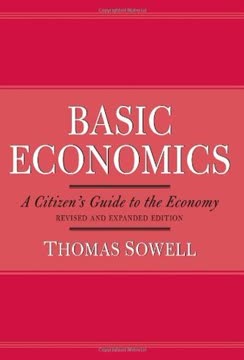Key Takeaways
1. Characters are defined by their actions, motives, and past
A character is what he does, yes — but even more, a character is what he means to do.
Actions reveal character. Characters become real to readers through their behavior, decisions, and responses to situations. Their past experiences shape their present actions, while their motives provide depth and believability. To create compelling characters:
- Show characters making choices and taking action
- Reveal their inner thoughts and motivations
- Provide backstory that informs their current behavior
- Demonstrate how they interact with others and their environment
Character dimensions:
- Physical appearance and mannerisms
- Dialogue and speech patterns
- Habits and quirks
- Skills and abilities
- Relationships and social roles
- Beliefs and values
2. Effective characterization balances realism and romanticism
It's vital that along with making Nora seem exciting and wonderful, you also help your readers understand and believe in her, so they can connect her with their own lives.
Striking the right balance. Readers want characters who are both relatable and extraordinary. Too much realism can make characters boring, while excessive romanticism can make them unbelievable. To achieve this balance:
- Ground characters in realistic details and behaviors
- Give them unique qualities or abilities that set them apart
- Show their flaws and vulnerabilities alongside their strengths
- Allow them to surprise readers while remaining true to their core
Character development techniques:
- Gradual revelation of character traits
- Internal conflicts and personal growth
- Unexpected reactions to situations
- Contrasting public and private personas
3. Sympathy and antipathy shape reader engagement
When readers pick up your story or novel, they want it to be good. They want to care about the people in your story. They want to believe.
Emotional investment is key. Readers' feelings towards characters significantly impact their engagement with the story. Creating sympathy or antipathy involves:
- Showing characters' vulnerabilities and struggles
- Revealing noble intentions or selfish motives
- Demonstrating growth or regression in character arcs
- Balancing likable traits with flaws
Techniques for building sympathy:
- Altruism and self-sacrifice
- Courage in the face of adversity
- Relatable goals and desires
- Humor and self-deprecation
Techniques for creating antipathy:
- Cruelty or selfishness
- Betrayal of trust
- Hypocrisy or dishonesty
- Abuse of power
4. Comic characters require controlled disbelief
Comic characters cannot be believable in the same way that other characters are. They can't be unbelievable, either.
Walking the fine line. Comic characters must be both believable enough to engage readers and exaggerated enough to be funny. This balance is achieved through:
- Exaggeration of specific traits or behaviors
- Unexpected reactions to situations
- Maintaining a core of relatable humanity
- Using timing and context for comedic effect
Comic character techniques:
- Quirky mannerisms or speech patterns
- Absurd logic or misunderstandings
- Running gags or recurring jokes
- Contrasts between appearance and behavior
5. Serious characters demand plausible justification
Fiction doesn't deal with what happened once. Fiction deals with what happens.
Building believability. Serious characters require careful justification for their actions and traits to maintain reader engagement. This involves:
- Providing clear motivations for character choices
- Showing the consequences of their actions
- Developing consistent personality traits
- Revealing backstory that informs current behavior
Techniques for character justification:
- Internal monologue revealing thought processes
- Flashbacks to formative experiences
- Gradual revelation of character history
- Reactions from other characters
6. Character transformations need clear causes
Every revision of motive is a revision of the story.
Change with purpose. Character transformations are powerful storytelling tools, but they must be believable and well-justified. Effective character changes require:
- Clear catalysts or turning points
- Gradual development over time
- Internal and external conflicts driving change
- Consistency with established character traits
Types of character transformations:
- Moral or ethical shifts
- Emotional growth or regression
- Acquisition of new skills or knowledge
- Changes in social status or relationships
7. First-person narration offers intimacy but presents challenges
The use of first person will lead you to discover a new voice for each story told by a different narrator.
Intimate but limited perspective. First-person narration allows readers to experience the story directly through a character's eyes, but it comes with limitations:
- Restricted to the narrator's knowledge and perceptions
- Potentially unreliable or biased viewpoint
- Challenges in revealing information unknown to the narrator
- Difficulty in describing the narrator without seeming unnatural
First-person narration techniques:
- Stream of consciousness
- Unreliable narrator
- Epistolary format (letters, diary entries)
- Multiple first-person narrators
8. Third-person narration provides flexibility in storytelling
Choose the simplest, clearest, least noticeable technique that will still accomplish what the story requires.
Versatile storytelling tool. Third-person narration offers greater flexibility in presenting information and perspectives:
- Ability to switch between multiple characters' viewpoints
- Option to reveal information unknown to characters
- Easier to provide objective descriptions and background
- Can vary in distance from characters' thoughts and emotions
Types of third-person narration:
- Omniscient: all-knowing narrator
- Limited: focused on one character's perspective
- Objective: no access to characters' thoughts
- Multiple: shifting between different characters' viewpoints
9. Narrative choices impact reader experience and story dynamics
Your decision whether to use first person or third person is not so much a grammatical choice as a narrative strategy.
Crafting the reader's journey. The choice of narrative voice and perspective significantly affects how readers experience the story:
- Influences the level of intimacy with characters
- Determines the amount and type of information revealed
- Shapes the pacing and structure of the narrative
- Affects the reader's emotional engagement with the story
Factors to consider in narrative choices:
- Genre expectations and conventions
- Story themes and tone
- Character complexity and development
- Plot structure and pacing requirements
Last updated:
FAQ
What's Characters & Viewpoint about?
- Focus on Fiction Writing: Characters & Viewpoint by Orson Scott Card is a comprehensive guide for writers on creating compelling characters and selecting the right narrative perspective.
- Three Main Parts: The book is structured into three parts: Inventing Characters, Constructing Characters, and Performing Characters, each addressing different facets of character development.
- Tools for Writers: Card offers various tools and techniques to help writers understand character motivations, relationships, and how to effectively convey their stories.
Why should I read Characters & Viewpoint?
- Enhance Writing Skills: This book is essential for writers aiming to improve their character development and narrative techniques, making their stories more engaging.
- Practical Advice: Card provides practical advice and insights based on his extensive experience, applicable for both beginners and seasoned authors.
- Understanding Human Nature: The book delves into the psychology of characters, helping writers create believable and relatable figures that resonate with readers.
What are the key takeaways of Characters & Viewpoint?
- Characterization Techniques: Emphasizes understanding a character's actions, motives, past, and relationships to create depth and authenticity.
- Point of View Matters: Discusses how the choice of narrative perspective can significantly impact the reader's connection to the characters and the story.
- Emotional Stakes: Highlights methods to raise emotional stakes, such as suffering, sacrifice, and jeopardy, to engage readers more deeply.
What is the "MICE" Quotient in Characters & Viewpoint?
- Definition of MICE: The "MICE" Quotient stands for Milieu, Idea, Character, and Event, which are the four factors that determine the type of story being told.
- Story Structure: Each factor influences how characters should be developed; for example, a milieu story may require less character depth than a character-driven narrative.
- Balancing Factors: Understanding the MICE Quotient helps writers balance these elements effectively, ensuring that the story aligns with the intended focus.
How does Orson Scott Card define a character?
- Character Actions: Card states, "A character is what he does," emphasizing that a character's actions are the most direct way to understand them.
- Motive and Past: He notes that a character's motives and past experiences shape their actions, providing deeper insight into their personality.
- Complexity of Characters: Encourages writers to create multifaceted characters, avoiding stereotypes and clichés to make them more relatable.
What makes a good fictional character according to Card?
- Reader Engagement: Card identifies three questions readers ask: "So what?" "Oh yeah?" and "Huh?" A good character should engage the reader and answer these questions effectively.
- Character Interrogation: Writers should interrogate their characters, asking why they act a certain way and what motivates them, to create depth.
- Transformation: A compelling character often undergoes some form of transformation or growth throughout the story, making their journey more impactful.
What are some techniques for raising emotional stakes in a story?
- Suffering and Sacrifice: Characters who endure pain or make sacrifices become more memorable and relatable to readers.
- Jeopardy and Tension: Introducing jeopardy, where characters face potential loss or danger, increases reader investment in the outcome of the story.
- Emotional Connections: Creating strong emotional connections between characters and their struggles enhances reader engagement and empathy.
How does Card suggest using stereotypes in character creation?
- Stereotypes as Tools: Stereotypes can be useful for quickly establishing a character's role, especially for walk-ons and minor characters.
- Avoiding Clichés: Writers should be cautious not to rely on stereotypes too heavily, as this can lead to one-dimensional characters.
- Subverting Expectations: Encourages writers to play against stereotypes to surprise readers and create more interesting characters.
What is the importance of point of view in storytelling according to Characters & Viewpoint?
- Narrative Perspective: The choice of point of view shapes how readers perceive characters and events, influencing their emotional connection to the story.
- First-Person vs. Third-Person: Different perspectives offer varying levels of intimacy and insight into a character's thoughts and feelings.
- Unreliable Narrators: Using unreliable narrators can add complexity to the story, challenging readers to question the truth of the narrative.
What are the best quotes from Characters & Viewpoint and what do they mean?
- "Everybody is the hero of his own story.": Highlights that even antagonists have their own motivations and justifications, encouraging exploration of all characters' complexities.
- "The only thing that can save an interloper is vindication.": Suggests that characters must earn their place in the story through their actions and growth.
- "The storyteller’s strongest tools for provoking the readers’ antipathy cannot be overwhelmed by the tools for arousing sympathy.": Emphasizes balancing likable and unlikable traits to create realistic characters.
How does Characters & Viewpoint address the concept of unreliable narrators?
- Understanding Unreliability: Unreliable narrators add depth and complexity by presenting a skewed perspective, creating tension and intrigue.
- Clues for Readers: Writers should provide subtle clues to indicate the narrator's unreliability, allowing readers to engage critically with the text.
- Character Motivation: The motivations behind a narrator's lies or omissions should be clear, enhancing the reader's connection to the story.
How does Characters & Viewpoint suggest handling multiple viewpoints in a story?
- Clear Transitions: Use clear transitions, such as chapter breaks or line spaces, to signal changes in viewpoint characters, helping readers adjust without confusion.
- Consistent Characterization: Each viewpoint character should be well-developed and distinct, with their own voice and motivations.
- Building Tension: Switching viewpoints can build tension and deepen the narrative by revealing different aspects of the story, enhancing understanding of the plot.
Review Summary
Characters & Viewpoint receives mixed reviews, with many praising its insightful advice on character development and viewpoint selection. Readers appreciate Card's clear explanations and practical examples. Some find the book particularly helpful for novice writers, while others note its dated content and basic approach. Critics point out Card's biases and outdated examples. Despite these criticisms, many consider it a valuable resource for writers seeking to improve their characterization skills and understand different narrative perspectives.
Similar Books










Download PDF
Download EPUB
.epub digital book format is ideal for reading ebooks on phones, tablets, and e-readers.







